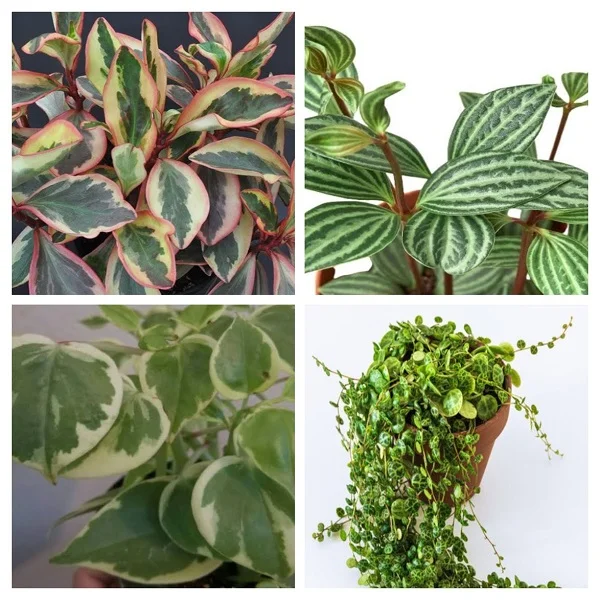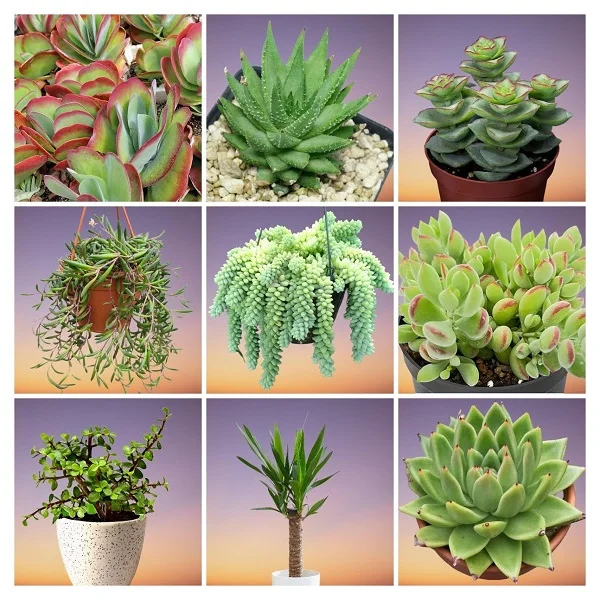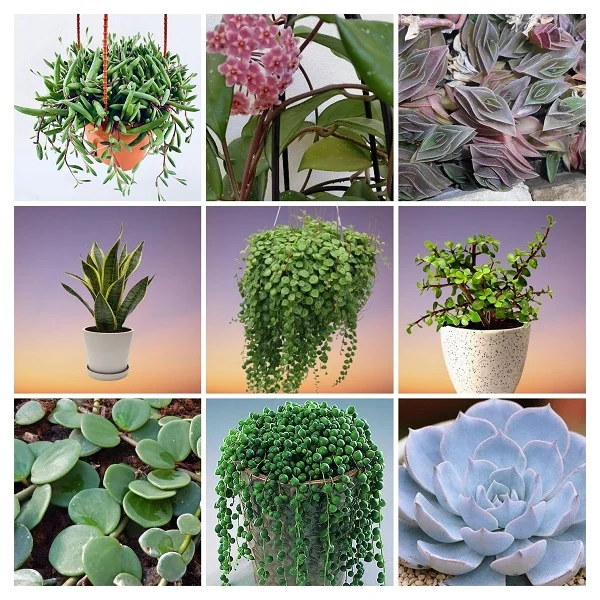String of Turtles Plant (Peperomia prostrata) Indoor Care and Propagation Guide
Some links in this post may be affiliate links
String of Turtles Plant (Peperomia prostrata) does best in bright light with some direct sunlight, warm and humid conditions and moderately moist, rich, well-drained soil coupled with monthly feeding in the growing season.
Peperomia prostrata also called Magic Marmer is among the popular Peperomia varieties that is easy to grow and adapts well to a wide range of growing conditions.
Magic Marmer is a compact, perennial bearing succulent, heart-shaped leaves about 1 inch long with beautiful patterns of white veins which vary in color from maroon to dark blue to purple in young plants and they become silvery-white as the plant matures.
The veining on the leaves gives them the look of tiny turtles hence the common name, 'String of Turtles' and is one of the popular string of plants ideal for indoors.
String of Turtles Plant is a trailing type of Peperomia which makes it one the best succulent plants for hanging baskets.
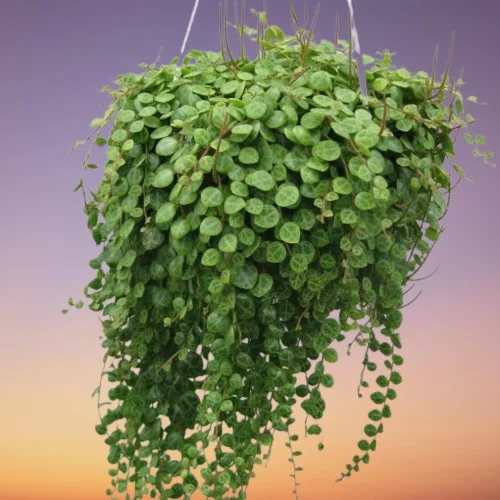
Botanical name: Peperomia prostrata
Family: Piperaceae
Common names: String of Turtles, Magic Marmer
Origin
Peperomia prostrata is native to the tropical rain forests in Brazil where it grows as an epiphyte on trees. An epiphyte grows on trees for support only, it does not affect the tree in any way.
Flower
The flowers in String of Turtles Plant are rat-tail flower-heads made up of cream-colored flowers on an upright spike.
Is String of Turtles Plant toxic?
Peperomia prostrata like other Peperomia Plants is non-toxic to humans and pets. They are some of the pet-safe plants you can grow in the home.
Where to Buy
If you are looking to acquire String of Turtles Plants for your plant collection, they are available online on Amazon (Link to Amazon).
Peperomia prostrata Care Indoors
String of Turtles Plant (Peperomia prostrata) grows best in bright light with 4-6 hours of direct sunlight, average warmth of 18-250C, humidity of 50-55% and moderately moist, fertile, well-drained, succulents potting soil coupled with monthly feeding during the growing season.
Peperomia prostrata requires regular pruning to keep it neat, minimize pest and disease infestations as well as rejuvenate growth. Repotting is only needed when the plant becomes extremely pot-bound. Keep reading for more details on these growing conditions and how to achieve them.
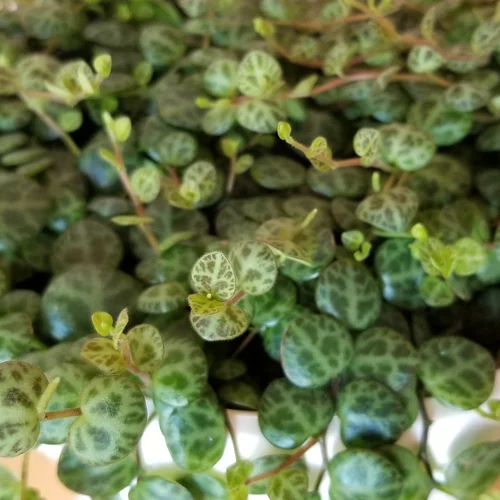
Watering
Water String of Turtles Plant liberally during the growing season and allow the top 2-3 inches of soil to dry out between waterings to keep the soil moderately moist.
Significantly cut down on watering during the cold season to keep the soil barely moist as growth is minimal at this time but do not allow the soil to dry out completely.
Ensure that the pot has a drainage hole to prevent the soil from getting soggy as it can result in root-rot and eventual loss of the plant. Learn more on how to water indoor plants correctly.
Light Requirements
String of Turtles Plant grows best in bright light with at least 4-6 hours of morning or late afternoon sunshine. Keep it away from hot midday sunshine as it can cause scorching of the leaves.
Keep in mind that, too little light may cause the plant to be leggy with wide spaces between the leaves as well as lose the beautiful leaf color. If the natural light is not adequate, you may grow the plant under a grow light. Check out these full spectrum grow lights on Amazon.
Rotate the pot ocassionally to ensure that the plant receives light on all sides for even growth as well as prevent legginess.
Temperature and Humidity
Average warmth of 18-250C is ideal for String of Turtles Plant. Keep it away from cold drafts as they can cause leaf drop. It does not require extra humidity to flourish. Average room humidity of 50-55% is adequate for this plant.
Clean the leaves regularly by splashing water from a steady jet to get rid of dust and also discourage pest and disease infestations. Make sure that there is good air circulation to minimize fungal diseases.
Fertilizer
Feed Peperomia prostrata with a balanced, liquid fertilizer monthly during the growing period to encourage a lush growth. Withhold feeding in the cold season as growth is reduced and feeding at this time may lead to fertilizer burn and death of the plant.
Potting Mix
The best potting mix for String of Turtles Plant should be rich in organic matter, loose and free-draining to avoid getting soggy soil. The soil should be loose enough to allow water to drain out fast enough.
Magic Marmer is prone to root-rot if the soil gets soggy (retains too much water), therefore, cactus and succulents mix is ideal as it drains easily.
Repotting
Repot String of Turtles Plant during the growing season only when the plant has become pot-bound. However, you can refresh the soil at the beginning of the growing season if not repotting.
Use a pot one size larger than the current one and ensure that the pot has a drainage hole to prevent the soil from getting soggy as it can lead to root-rot. A shallow, terracotta pot rather than deep pot is preferable as the plant has a small root system.
Pruning
Pruning Peperomia prostrata involves regular removal of dead foliage to maintain the plant neat as well as reduce pest and disease infestations.
To encourage a bushy, compact growth, regularly pinch off the growing tips. Cutback the stems during the growing season to rejuvenate growth; as the plant ages, it becomes straggly.
Propagation
String of Turtles Plant (Peperomia prostrata) propagation can be done in 3 ways; from leaf cuttings, from stem-tip cuttings or by plant division.
1. How to propagate String of Turtles from leaf cuttings in water
The leaf cuttings root easily, therefore there is no need for a rooting hormone. Take leaf cuttings from a healthy String of Turtles Plant and ensure each leaf cutting has a petiole.
Allow some time for the formation of a protective callus tissue over the cuts of the leaf cuttings to prevent rotting.
Once callused, place the leaf cuttings in a jar of clean plain water or in a propagation station and change the water every 5-7 days.
Place the set up in warm, well-lit place until growth begins at the base of the cuttings leaf petiole. Allow enough time for substantial growth of the roots and new leaves.
Transfer the rooted cuttings to individual pots in moist, cactus and succulents mix and place in bright indirect light. For a fuller plant, transplant several plants into one pot.
Maintain the soil moist until the new Peperomia prostrata are well established after which you can begin routine care.
2. How to propagate String of Turtles from stem-tip cuttings
Take stem cuttings of about 4-5 inches length from a healthy String of Turtles Plant and ensure each cutting has at least 2 sets of leaves. The stem-tip cuttings root easily, therefore, there is no need for a rooting hormone.
Allow some time for the formation of a protective callus tissue over the cuts of cuttings to prevent rotting.
Once callused, insert the cuttings in moist rooting soil and place in warm, well-lit place away from direct sunlight.
Maintain the soil moist until new growth emerges and substantial growth has been observed.
Transfer the rooted stem cuttings to individual pots in moist, cactus and succulents soil and begin routine care. For a fuller plant, transfer several cuttings into one pot.
3. How to propagate String of Turtles by plant division
Water the String of Turtles Plant thoroughly at least 1 day before to make it easier to divide and also hasten establishment as a well hydrated plant suffers less shock and takes a shorter time to take root.
Slide out the plant from its pot and divide it into several sections by pulling apart the roots. Ensure each section has adequate roots to hasten establishment.
Pot these sections in individual pots in moist, cactus and succulents soil and place in a warm, well-lit place away from direct sunlight.
Maintain the soil moist until new growth emerges on the sections. Allow the new String of Turtles Plants to be well established before transplanting after which you can begin routine care.
Related: How to Propagate Radiator Plants (4 Easy Methods of Peperomia Propagation)
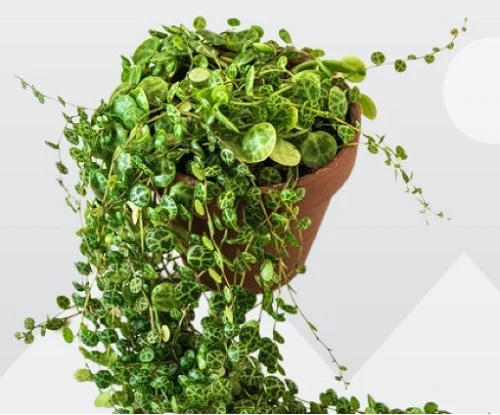
Peperomia prostrata Problems
String of Turtles Plant (Peperomia prostrata) problems include dropping leaves, dull leaves, shriveled leaves, wilting, leggy growth, diseases and pests among others. Keep reading for more on these problems and how to fix them.
Dropping leaves
Dropping leaves (leaf fall) in String of Turtles Plant is caused by many and varied reasons like overwatering, insufficient lighting, overfeeding among others.
Check out these 12 reasons why Peperomia is dropping leaves with solutions
Wilted and discolored leaves and corky swellings under the leaves
String of Turtles Plant wilted and discolored leaves and corky swellings under the leaves are due to soggy soil. This is an indication of root-rot. Isolate the affected plant and treat it for the disease. To prevent the soil from getting soggy, ensure that the pot has a drainage hole and that the soil is loose and free-draining.
Diseases
String of Turtles Plant is prone to leaf spot. Isolate the affected plant and treat it with neem oil as per the manufacturer's instructions.
Pests
String of Turtles Plant is prone to whiteflies, mealy bugs, scales and spider mites. Isolate the affected plant to prevent spread to other plants. Treat it with insecticidal soap as per the manufacturer's recommendations.
Leggy stems
Leggy stems in String of Turtles Plant are due to too low light. Cutback the stems to rejuvenate growth. Move the plant to a brighter spot where it will receive medium to bright indirect light or instal grow lights if the natural light is not enough. Check out this guide on understanding light for houseplants.
Brown leaf tips and edges
Brown leaf tips and edges in String of Turtles Plant are due to sudden drop in temperature from cold drafts. Remove all the damaged leaves. Keep the plant away from cold drafts from windy doors, drafty windows, air conditioners and maintain average room temperatures of 18-250C. Check out this guide on understanding temperature for houseplants.
Dull and lifeless leaves
Exposure of String of Turtles Plant to hot direct sunlight will cause the leaves to become dull and lifeless. Shield the plant from hot direct sunlight or move it to a shaded spot.
You liked it? Share on social media.
Related Content
Amazon Associates Disclosure
Homeplantsguide.com is a participant in the Amazon Services LLC Associates Program, an affiliate advertising program designed to provide a means for sites to earn advertising fees by advertising and linking to amazon.com.



